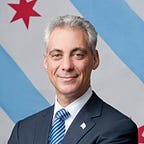Food Deserts Are Their Own Pandemic Hot Spots
Amid horrifying Covid-19 racial disparities, America needs to expand access to healthy food
There are a great many factors that have made African American communities more vulnerable to Covid-19. Economic disparities, unequal access to health care, and legacies of discrimination all unquestionably play big roles. But anecdotal evidence suggests that something else is also at work. Within Chicago, African American neighborhoods with nearby access to grocery stores boast a lower Covid-19 mortality rate than those that remain food deserts. And while access to nutrition isn’t a panacea for the deep-seated issues that undermine access to the American dream, the absence of fresh food is a telltale sign of curtailed opportunity.
The disparities are remarkable and must not be overlooked. Woodlawn, a predominantly African American neighborhood on the city’s South Side, not far from the University of Chicago, was without a grocery store for 47 years until Jewel opened a new facility in 2019. Today, the neighborhood has a Covid-19 mortality rate of 2.1 deaths per every 10,000 residents. Austin, a neighborhood on the far West Side that’s just over the border from the prosperous suburb of Oak Park, remains today without sufficient access to fresh food. The rate there is more than three times…
